Sarah Sundin's Blog, page 422
July 16, 2013
Today in World War II History
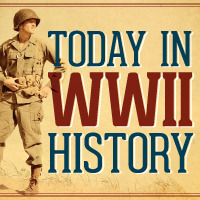 70 Years Ago—July 16, 1943: At Kursk, Russia, Germans halt offensive on Hitler’s order.Theophil Wurm, bishop of Württemburg, writes Hitler to protest deaths in camps.
70 Years Ago—July 16, 1943: At Kursk, Russia, Germans halt offensive on Hitler’s order.Theophil Wurm, bishop of Württemburg, writes Hitler to protest deaths in camps.
Published on July 16, 2013 01:00
July 15, 2013
Pharmacy in World War II - The Military
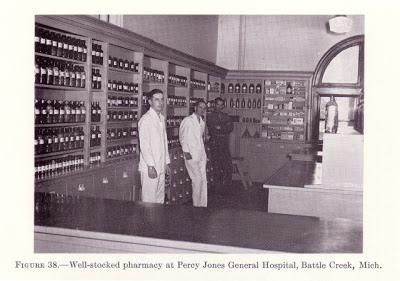 Pharmacy at Percy Jones General Hospital, Battle Creek, MichiganWhile researching the military medical system for my World War II novels, I read about physicians and nurses, dentists and veterinarians. But where were the pharmacists? In the civilian world, the physician prescribes medication, the pharmacist purchases, compounds, and dispenses, and the patient or nurse administers. I discovered the wartime military system differed. As a pharmacist I was baffled and intrigued.
Pharmacy at Percy Jones General Hospital, Battle Creek, MichiganWhile researching the military medical system for my World War II novels, I read about physicians and nurses, dentists and veterinarians. But where were the pharmacists? In the civilian world, the physician prescribes medication, the pharmacist purchases, compounds, and dispenses, and the patient or nurse administers. I discovered the wartime military system differed. As a pharmacist I was baffled and intrigued.My research eventually inspired On Distant Shores, which follows Army pharmacist Tech. Sgt. John "Hutch" Hutchinson and flight nurse Lt. Georgie Taylor through Sicily and Italy.
First we looked at the role of the pharmacist inthe 1940s, then we took a visit to the local drug store and how its role changed during the war, and today I’ll review the rather shocking role—or lack thereof—of pharmacy and pharmacists in the US military.
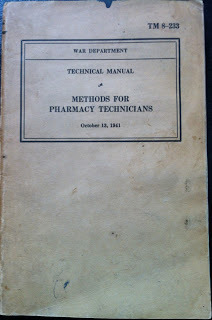 Army technical manual TM 8-233
Army technical manual TM 8-233Methods for Pharmacy Technicians
October 13, 1941Drug Distribution in the Military
In the US Army and Navy, outpatient prescriptions were filled at base or unit dispensaries, while inpatient orders were filled at hospital pharmacies. Both dispensaries and pharmacies were staffed by enlisted personnel—pharmacy technicians in the Army and pharmacist’s mates in the Navy—under the control of physicians. In 1936, the pre-war Army had forty graduate pharmacists serving as enlisted technicians.
Pharmacy technicians did not need any previous health care background or education. They went through a three-month program based on practical training rather than scientific understanding.
Medical Administrative Corps
For decades, pharmacy organizations had lobbied for a Pharmacy Corps with commissioned pharmacists. Indeed, most nations had similar corps. However, the US Army Medical Department thought of pharmacists in a condescending manner as businessmen rather than professionals, and they saw their drug distribution system as adequate.
The Medical Administrative Corps was formed in 1920 as a compromise. The MAC was responsible for administrative duties within the Medical Department, including medication procurement and distribution. In 1936, the MAC was permitted to commission sixteen pharmacists, with future appointments in the MAC restricted to graduate pharmacists.
The number of officers in the MAC increased during the war. In 1943 six hundred graduate pharmacists served as MAC officers—but none of them served as pharmacists.
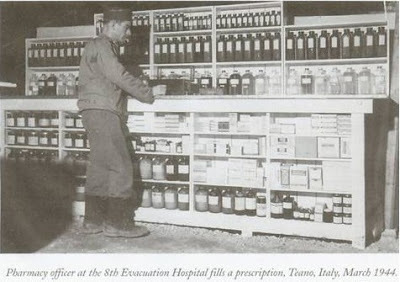 Pharmacist at the US 8th Evacuation Hospital, Teano, Italy, March 1944Options for Pharmacists
Pharmacist at the US 8th Evacuation Hospital, Teano, Italy, March 1944Options for PharmacistsSince most draft-age pharmacists had four-year bachelor’s degrees, they were eligible to serve as officers. While physicians, nurses, dentists, and veterinarians were commissioned as officers and placed in appropriate positions, no such option was available for pharmacists.
Upon enlistment, pharmacists could apply for the Army Officer Candidate School, but upon graduation, they could be assigned anywhere. Pharmacists served as infantry officers, artillery officers, and in many other divisions. Even if they happened to be assigned to the MAC, as noted above, they did not practice their profession.
If a pharmacist wanted to compound and dispense medications, his only option was to serve as an enlisted technician, with pay and privileges far below that of an officer.
Fight for a Pharmacy Corps
The American Pharmaceutical Association (APhA) renewed the legislative battle for a commissioned Pharmacy Corps. The Surgeon General’s office argued that “Army pharmacy was simpler than civilian practice. The department’s three-month pharmacy technician course was sufficient preparation. There was little compounding. Since medications were furnished in tablet form, ‘any intelligent boy can read the label’” (1).
These arguments did not sit well with pharmacists—or with the general public. Dr. Evert Kendig of the APhA argued that “Army pharmacy technicians were given responsibility beyond that legally permissible in civilian life even as the Army misused its professional pharmacists” (1). Several incidents were reported of prescriptions improperly filled by technicians and of blatant physician prescribing errors that would have been caught by a pharmacist. Public opinion tipped the scale, and on July 12, 1943, President Roosevelt signed legislation authorizing the formation of the Pharmacy Corps.
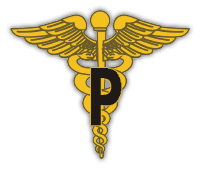 Pharmacy Corps
Pharmacy CorpsThe Pharmacy Corps was authorized to commission seventy-two pharmacists. However, the military moved slowly. In January 1944, after receiving 900 applications and conducting two-day written examinations, physical examinations, and interviews, twelve officers were commissioned. By January 1945, the Pharmacy Corps had only commissioned eighteen pharmacists. The other officers’ slots were filled by former MAC officers.
The drug distribution system did not change by the end of the war, but the formation of the Pharmacy Corps laid the groundwork for post-war reforms.
Resources:
1. Ginn, Richard VN. The History of the US Army Medical Service Corps. Washington DC: Center for Military History, 1997. (Accessed February 6, 2011 at http://history.amedd.army.mil/booksdocs/HistoryofUSArmyMSC/msc.html).
2. Worthen, Dennis B. Pharmacy in World War II. New York: Pharmaceutical Products Press, 2004.
Published on July 15, 2013 02:00
Today in World War II History
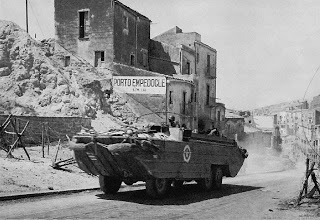 A DUKW carrying supplies in Porto Empedocle, Sicily70 Years Ago—July 15, 1943: US Seventh Army takes Agrigento and Porto Empedocle, Sicily. US Navy changes carrier designations: CV—large, CVL—light, CVE—escort, CVB for large Midway class.
A DUKW carrying supplies in Porto Empedocle, Sicily70 Years Ago—July 15, 1943: US Seventh Army takes Agrigento and Porto Empedocle, Sicily. US Navy changes carrier designations: CV—large, CVL—light, CVE—escort, CVB for large Midway class.
Published on July 15, 2013 01:00
July 14, 2013
Today in World War II History
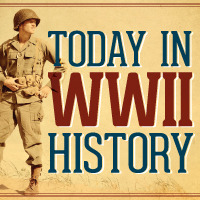 70 Years Ago—July 14, 1943: In Krasnodor, Russia, Soviets try 11 Germans in first war crimes trial of war. Movie premiere of For Whom the Bell Tolls, starring Gary Cooper & Ingrid Bergman.
70 Years Ago—July 14, 1943: In Krasnodor, Russia, Soviets try 11 Germans in first war crimes trial of war. Movie premiere of For Whom the Bell Tolls, starring Gary Cooper & Ingrid Bergman.
Published on July 14, 2013 01:00
July 13, 2013
Today in World War II History
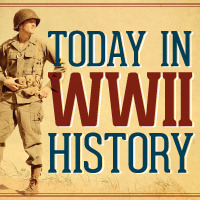 70 Years Ago—July 13, 1943: Due to the Allied invasion of Sicily, Hitler orders a halt to the Kursk offensive in Russia. Battle of Kolombangara: US & New Zealand ships sink five Japanese ships in Kula Gulf, Solomons.
70 Years Ago—July 13, 1943: Due to the Allied invasion of Sicily, Hitler orders a halt to the Kursk offensive in Russia. Battle of Kolombangara: US & New Zealand ships sink five Japanese ships in Kula Gulf, Solomons.
Published on July 13, 2013 01:00
July 12, 2013
Today in World War II History
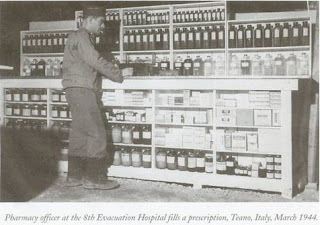 Pharmacy at the 8th Evacuation Hospital, Teano, Italy, March 194470 Years Ago—July 12, 1943: Battle of Prokhorovka at Kursk—in largest tank battle in history, Soviets advance as Germans lose 400 tanks. President Roosevelt signs bill establishing the Army Pharmacy Corps; 72 officers authorized, but most pharmacists remained enlisted men.
Pharmacy at the 8th Evacuation Hospital, Teano, Italy, March 194470 Years Ago—July 12, 1943: Battle of Prokhorovka at Kursk—in largest tank battle in history, Soviets advance as Germans lose 400 tanks. President Roosevelt signs bill establishing the Army Pharmacy Corps; 72 officers authorized, but most pharmacists remained enlisted men.
Published on July 12, 2013 01:00
July 11, 2013
Today in World War II History
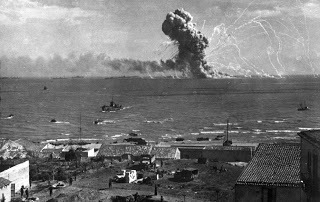 American transport SS Robert Rowan exploding after being hit by
American transport SS Robert Rowan exploding after being hit byGerman Ju 88 bombers, Gela, Sicily70 Years Ago—July 11, 1943: On the heels of a Luftwaffe attack, US ships fire on US C-47s loaded with paratroopers, one of worst fratricidal incidents of the war; 23 C-47s lost, 318 casualties.
Published on July 11, 2013 01:00
July 10, 2013
Today in World War II History
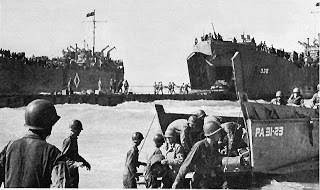 US Seventh Army landing at Gela, Sicily70 Years Ago—July 10, 1943: Operation Husky: Allies invade Sicily. US Seventh Army lands at and takes Gela, Scoglitti, and Licata, while British Eighth Army lands at and takes Syracuse. First combat use of DUKW amphibious vehicles by US in Husky landings.
US Seventh Army landing at Gela, Sicily70 Years Ago—July 10, 1943: Operation Husky: Allies invade Sicily. US Seventh Army lands at and takes Gela, Scoglitti, and Licata, while British Eighth Army lands at and takes Syracuse. First combat use of DUKW amphibious vehicles by US in Husky landings.
Published on July 10, 2013 01:00
July 9, 2013
Today in World War II History
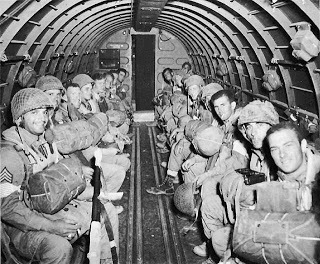 70 Years Ago—July 9, 1943: Opening the invasion of Sicily before midnight, US C-47s drop British in gliders near Syracuse and US paratroopers near Gela.
70 Years Ago—July 9, 1943: Opening the invasion of Sicily before midnight, US C-47s drop British in gliders near Syracuse and US paratroopers near Gela.
Published on July 09, 2013 01:00
July 8, 2013
Pharmacy in World War II - The Drug Store
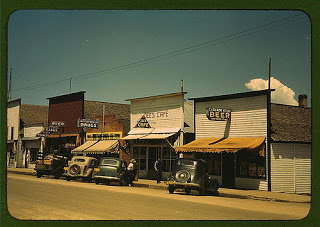 Street scene, including drugstore, Cascade, Idaho, 1940s (Library of Congress)In my novel, On Distant Shores, which officially releases August 1, 2013, the hero serves an Army pharmacist in World War II.
Street scene, including drugstore, Cascade, Idaho, 1940s (Library of Congress)In my novel, On Distant Shores, which officially releases August 1, 2013, the hero serves an Army pharmacist in World War II.As a pharmacist, I found much about my profession has changed, but some things have not—a personal concern for patients, the difficult balance between health care and business, and the struggle to gain respect in the physician-dominated health care world. Last week I discussed the role of the pharmacist in the 1940s, today we'll visit the local drug store and see how its role changed during the war, and on July 15, I’ll review the role of pharmacists in the US military.
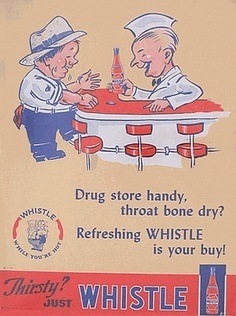 Welcome to the Corner Drug Store—1939
Welcome to the Corner Drug Store—1939Perkins’ Drugs stands on the corner of Main Street and Elm, where it’s stood all your life. Large glass windows boast ads for proprietary medications and candy, and a neon mortar-and-pestle blinks at you. When you open the door, bells jangle. The drug store is open seven days a week, sixteen hours a day, so you know it’ll always be there for you. To your right, old-timers and teenagers sit at the soda fountain on green vinyl stools, discussing politics and the high school football game. The soda jerk waves at you.
You pass clean shelves stocked full of proprietary medications, toiletries, cosmetics, hot water bottles, hair pins and curlers, stockings, cigarettes, candy, and bandages. You know where everything is—and if you can’t find it, Mr. Perkins or his staff will be sure to help you.
The owner, Mr. Perkins, is hard at work behind the prescription counter with good old Mr. Smith and Mr. Abernathy, that new young druggist Mr. Perkins hired last year. Mr. Perkins greets you by name, asks about your family, and takes your prescription. He has to mix an elixir for you. If you don’t want to wait, he’ll be happy to have his delivery boy bring it to your house. But you don’t mind waiting. You have a few items to purchase, and you’d love to sit down with a cherry Coke.
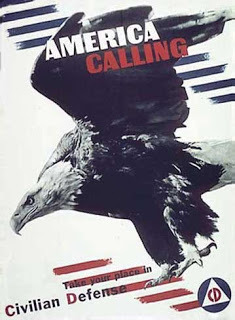 Welcome to the Corner Drug Store—1943
Welcome to the Corner Drug Store—1943Perkins’ Drugs still stands at the corner of Main Street and Elm. Large glass windows boast Army and Navy recruitment posters. The neon sign has been removed to meet blackout regulations. The store is open for fewer hours since Mr. Smith retired and Mr. Abernathy got drafted. Mr. Perkins hired Miss Freeman. Not many people are thrilled to have a “girl pharmacist,” but if Mr. Perkins trusts her, that’s good enough for you. Perkins’ Drugs and Quality Drugs on the other side of town alternate evening hours so the town’s needs are met.
A placard on the door reminds you that Perkins’ Drugs is authorized by the Office of Civilian Defense as a pharmaceutical unit, meaning the store will provide a kit of medications and supplies for the casualty station in case of enemy attack. You pray the town will never need it.
Bells jangle when you open the door. The soda fountain is closed. Mr. Perkins can’t buy metal replacement parts for the machine, the soda jerk is flying fighter planes over Germany, and sugar is too scarce a commodity.
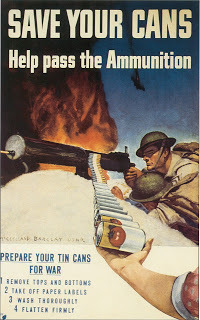 A barrel stands by the door. You toss in five tin cans, washed, labels removed, tops and bottoms cut off, and flattened. Mrs. Perkins at the cash register thanks you.
A barrel stands by the door. You toss in five tin cans, washed, labels removed, tops and bottoms cut off, and flattened. Mrs. Perkins at the cash register thanks you.You pass clean shelves with depleted stocks. Proprietary medications, cosmetics, toiletries, and medical supplies remain, but rubber hot water bottles, silk and nylon stockings, hair pins and curlers, candy, and cigarettes are in short stock—or unavailable. Most of the packaging has changed. Metal tins have been replaced by glass jars and cardboard boxes. You pick up a bottle of aspirin and a tube of toothpaste, double-checking that you brought your empty tube. Without that crumpled piece of tin, you couldn’t purchase a replacement. Tin is too dear.
At the prescription counter, Mr. Perkins greets you by name and asks about your family. Miss Freeman gives you a shy smile and you smile back. There’s a war on and women have a patriotic duty to do men’s work so men are free to fight. Mr. Perkins frowns at your prescription for an elixir. He’s used up his weekly quota of sugar, and his stock of alcohol and glycerin are running low. Would you mind capsules instead? Of course not. Mr. Perkins phones Dr. Weber and convinces him to change the prescription. Mr. Perkins can’t have the prescription delivered—he doesn’t qualify for extra gasoline and he couldn’t find a delivery boy to hire anyway.
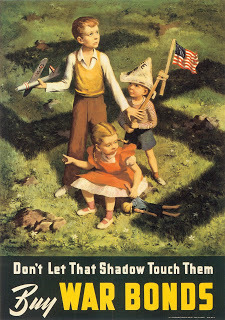 You and Mr. Perkins discuss war news as he sets up a wooden block with little holes punched in it, then lines the pockets with empty capsule halves. He weighs powders on a scale, mixes them in a mortar, then fills the capsule shells. After he sets the capsule tops in place, he puts the capsules in an amber glass bottle with the familiar Perkins’ Drugs label.
You and Mr. Perkins discuss war news as he sets up a wooden block with little holes punched in it, then lines the pockets with empty capsule halves. He weighs powders on a scale, mixes them in a mortar, then fills the capsule shells. After he sets the capsule tops in place, he puts the capsules in an amber glass bottle with the familiar Perkins’ Drugs label. You buy a few War Bonds. Your wages are higher than ever with the war on, and with all the shortages there’s nothing to buy. Besides, War Bonds are a solid financial investment and your patriotic duty. On a poster by the counter, three little children in the shadow of a Nazi swastika remind you: “Don't Let That Shadow Touch Them. Buy War Bonds.”
Mr. Perkins thanks you for your purchase, and you thank him for his service. War or no war, you know Perkins’ Drugs will always be there for you.
Resources
My main source was this excellent, comprehensive, and well-researched book: Worthen, Dennis B. Pharmacy in World War II. New York: Pharmaceutical Products Press, 2004.
http://www.lloydlibrary.org (Website of the Lloyd Library and Museum, which has many articles and resources on the history of pharmacy).
Published on July 08, 2013 02:00



